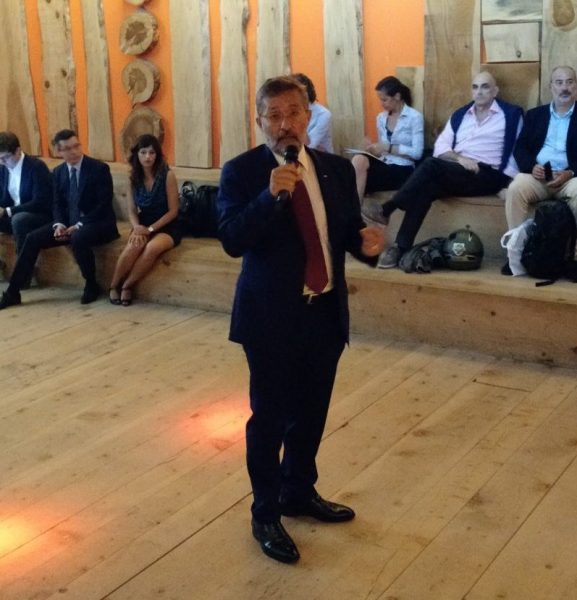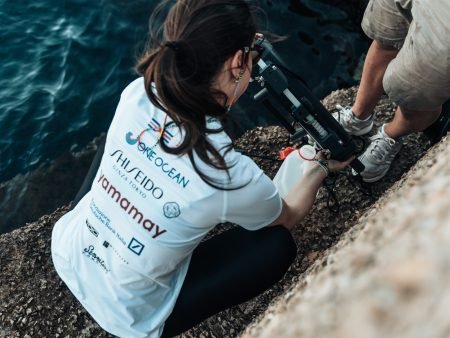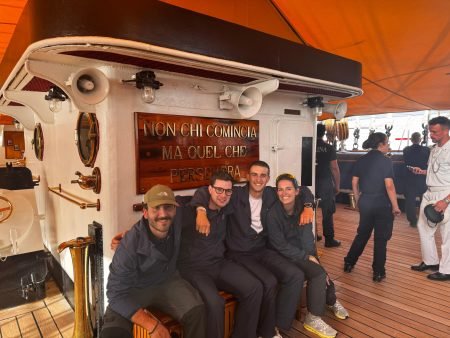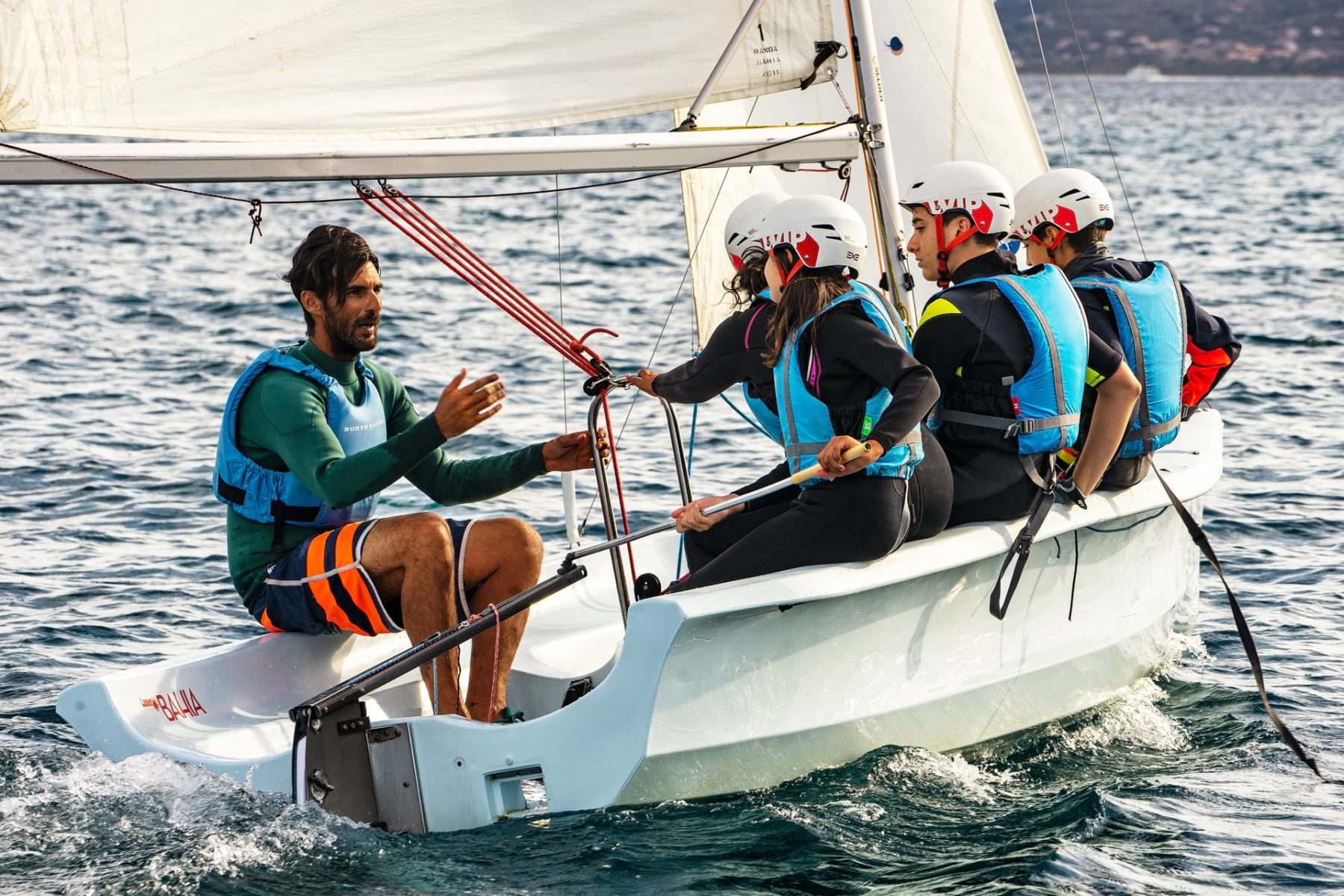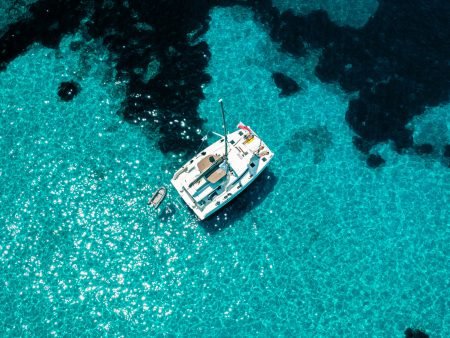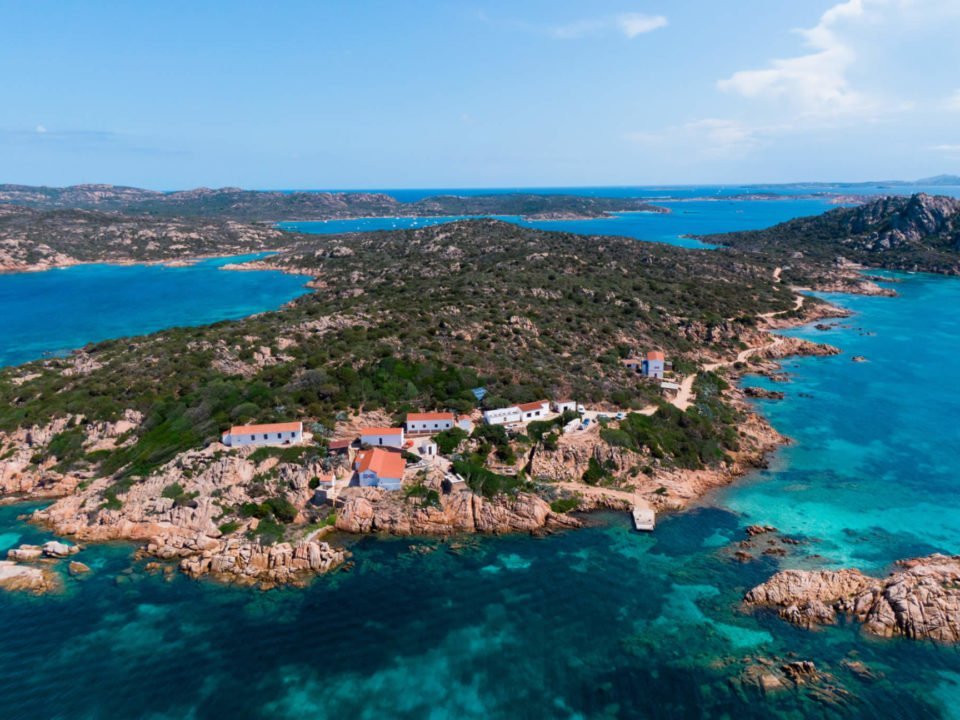Values, intentions and ambitions
They mark the dialogue on the future of Centro Velico Caprera, the most important sailing school in the Mediterranean. On the occasion of the meeting "Knowing the sea, to
to love and respect it", held today at the Triennale in Milan, Centro Velico Caprera invited people to reflect on the
the importance of knowledge of the environment in which we sail, the respect that must be shown for it, the role of the individual and the
and the role of the individual and the community as key points for building a sustainable culture.
With this event, Centro Velico Caprera renews its commitment to people and the environment, offering an innovative
and the environment, proposing an innovative cultural approach that is capable of preserving the extraordinary territory in which it is located.
territory in which it is set, the La Maddalena Archipelago, and enhance the value of an increasingly broader community that is not necessarily an expert in maritime art.
not necessarily experts in maritime art.
Convinced that sailing is a way of life, both on and off the water, Centro Velico Caprera and its projects and activities represent a heritage that can be enjoyed by all.
projects and activities is a heritage available to the community. Thanks to its
sustainable approach, it already contributes to the preservation of the original natural environment of the Island of Caprera and its waters, rich in marine biodiversity.
Caprera and its waters, which are rich in marine biodiversity, but now, with this new project, it is becoming an integral part of it and is contributing to increasing
and contributes to increasing the culture of the sea.

Discussing these issues, with the aim of sharing some best practices to improve marine life
they are Paolo Martano, President of Centro Velico Caprera, Riccardo Bonadeo, Commodore of the Yacht Club
Costa Smeralda and Vice President of the One Ocean Foundation, Enrico Bertacchi, Secretary General of the Centre
Velico Caprera, Lidia De Bernardi, Clean Sea Life project partner and Stefano Nannarelli, naturalist.
"The Centro Velico Caprera that I have had the honour of representing for the past three years has traditionally been attentive
to the environment that surrounds us. Our way of life at the base of Caprera has evolved over the years precisely to
guaranteeing quality and minimising polluting impacts in the La Maddalena park," introduced the meeting, Paolo
Martano, who continues: "With the introduction of the new course, we want to make available a new way of
concept of navigation and perception of the sea. Our objective is to provide elements of knowledge
the experience of one of our wildlife biologists over many years, which will enthuse our customers.
students and make them more involved in the problems of our seas. We firmly believe that by doing so the
culture of the sea can speed up the spread of the message of care and respect that the environment deserves.
so threatened today. Proof of this is the presence with us today of two projects at the forefront of the fight against the
marine pollutants: One Ocean Foundation and CleanSeaLife'.
Over the last 12 months, Centro Velico Caprera has launched important cooperation initiatives with One Ocean
Foundation, the international platform promoted by the President of the Yacht Club Costa Smeralda,
Princess Zahra Aga Khan and today represented by her Vice President the YCCS Commodore Riccardo Bonadeo.
Riccardo Bonadeo who says: "I am particularly keen on the mutual collaboration that has been established with for many reasons.
with Centro Velico Caprera for many reasons. The histories of Centro Velico Caprera and the Yacht Club Costa
The histories of and the Yacht Club Costa Smeralda are parallel and very similar.
We both celebrated our 50th anniversary last year, both with the intention of tackling the next 50 years by giving back to a sea that is now in danger what it has offered us so far.
what it has offered us so far. Our One Ocean Foundation is at the disposal of the Centro Velico Caprera to
actively collaborate. I don't need to dwell on the excellence of Centro Velico Caprera, nor on the many friends we have in common.
I don't need to talk about the excellence of , nor about the many friends we have in common, but I would like to point out that my personal sailing history, together with my wife Sciaké,
began with a sailing course at Caprera in the early 1970s.
A few months ago, the Clean Sea Life project, co-funded by the European Union as part of the
The Clean Sea Life project, co-funded by the European Union under the Life Programme, has been aiming to raise awareness among various categories of the sea's population through concrete actions. Divers, professional fishermen
fishermen, sport fishermen, ship owners and people working in the sector are involved throughout Italy in various actions to identify, register and collect waste from the sea.
to identify, register and collect waste from the sea.
"We are witnessing an ever-increasing mobilisation of both organisations and associations in the field of marine cleaning," explains Eng.
De Bernardi, partner in the Clean Sea Life project, explains.
importance that every citizen realises that even today their behaviour risks causing further damage to our sea basins.
damage to our sea basins. For example, it is now well known that the presence of microplastics in many commonly
textiles, in cosmetics, rather than from the decomposition of plastics is continuing to fill our seas and are being washed away.
filling our seas and being assimilated by marine wildlife".
So it is not just about statements or theory but also about operational action to raise awareness, sustainability
sustainability and good practices to reduce plastics in the sea.
The sailing experience thus becomes an instrument of social and environmental responsibility and is the goal that the
Centro Velico Caprera set itself back in 2017, on the occasion of its 50th anniversary. Keeping the
debate on a level of excellence, the association promotes a rich programme of projects that concentrate
especially in the summer months, of in-depth scientific studies and on-board experiences, such as the Navigation Course,
Environment and Culture, to name but one of the activities.
In the latter context, participants are offered the unique opportunity to enjoy the charm of the unspoilt nature of the Archipelago.
nature of the La Maddalena Archipelago and nearby Corsica, to carry out monitoring activities in the waters of what is considered the
waters of what is considered the Cetacean Sanctuary, and to discover the history that accompanies these places.
"The Navigation, Environment and Culture Course is part of a development plan for the Caprera Sailing Centre that I have been involved in for many years.
Enrico Bertacchi, the new General Secretary, says: "The course is part of a development plan for the Caprera Sailing Centre that I have been involved in for a few weeks.
"The objective is to offer a portfolio of courses that is as close as possible to the needs and ambitions of all lovers of the sea and sailing.
and ambitions of all sea and sailing enthusiasts. Today there are so many offers on the market, but very few manage to
but few manage to combine nautical and marine skills, location and life experience as well as Centro Velico Caprera , which closed 2017 with over 3000 students.
which closed 2017 with over 3,000 students, 360 weeks of courses and around 400 volunteer instructors who took part in teaching activities from April to October.
from April to October. It can boast more than 120 thousand trainees who in 50 years of activity have been able to
have been able to learn the art of seamanship and sailing".
In the new Navigation, Environment and Culture Course there are four itineraries covered by the 47-foot cabin cruiser,
with naturalist Stefano Nannarelli on board, who will act as "guide" to the discovery or re-discovery of the sea. The choice of
The choice of route will depend on weather and sea conditions, but this will not be a problem as the perimeter of the navigation
perimeter of navigation extends from the island of Tavolara to the island of Asinara, passing through the Strait of Bonifacio and
the Bocche di Bonifacio and as far as the nature reserves of Scandola, Baia d'Elbo and Girolata in Corsica. A very wide
A very wide stretch of water with many harbours, natural bays and sheltered areas where you can navigate safely in all weather conditions.
This is a course of awareness and discovery of the sea," says Nannarelli, "in which the sea itself will
This is a course to raise awareness and discover the sea," says Nannarelli, "where the sea itself will decide what kind of situations we will face. In general, however, since
However, in general, given that we will be attending a fairly limited stretch of sea for 8 weeks, it will certainly be possible to carry out some
some monitoring activities. For example, given that the area is the Cetacean Sanctuary,
we will collect data on the presence of cetaceans and, through the photo-identification of individuals, we will try to discover, over time, the habits of the species we encounter.
the habits of the species we encounter. We are also interested in monitoring the possible presence of alien
We are also interested in monitoring the possible presence of alien species, and in assessing the presence of plastics in the sea.
plankton nets in the water for one or two hours a day. Pupils will be able to discover and appreciate the differences between the
The pupils will be able to discover and appreciate the differences between the neritic fauna, i.e. the fauna below the coast, and the pelagic fauna. All this is done with an empirical and participatory approach
involvement of the pupils, without any excessive claim to being scientific.
Let's not forget that the sailing didactics part will also involve the students in depth.

